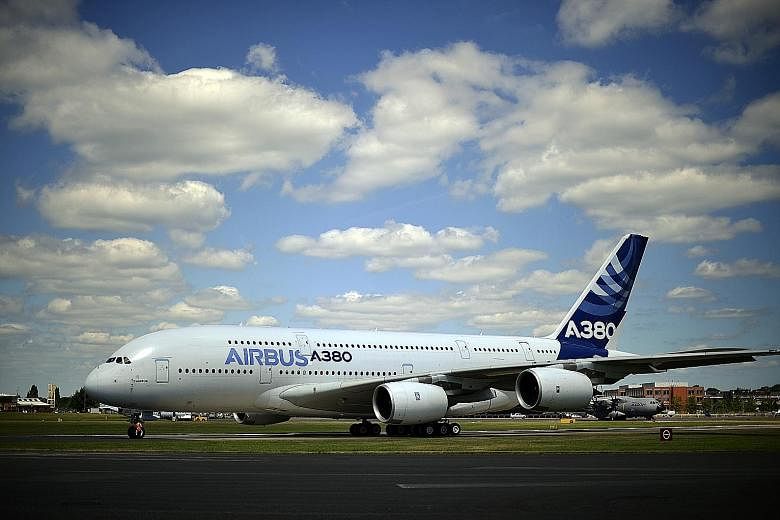European plane-maker Airbus has given up on the loss-making Airbus 380, with the last superjumbo to be delivered in 2021.
Its decision to pull the plug, however, will not affect the operations of airlines like Singapore Airlines (SIA), which has 19 of the giant jets, as the company has pledged to continue to provide them with the support they need.
Yesterday's announcement of the shutdown - which comes 12 years after the first A-380 took to the skies in SIA colours in 2007 - coincides with the plane's biggest customer Emirates slashing its order.
The Dubai-based airline, which has about 110 of the giant jets, had intended to grow the fleet to 162 planes. This has been cut to 123.
Emirates has instead placed a fresh order for 70 of Airbus' smaller A-330s and A-350s.
"It's a painful decision (to end the A-380 production)," said Airbus chief executive officer Tom Enders at a conference call with journalists and analysts. "We've invested a lot of effort, a lot of resources and a lot of sweat into this aircraft... But obviously we need to be realistic."
With Emirates' decision, the order backlog is not enough to sustain production, he added.
Stopping the A-380 production could affect as many as 3,500 jobs, Airbus said, adding that efforts will be made to redeploy the workers.
The first A-380 was delivered to SIA in 2007 with much fanfare, and the first Singapore-Sydney flight made headlines across the world.
-
2021
-
Year the last Airbus 380 will be delivered.
-
FROM BIRTH TO DEMISE
-
JUNE 1994: Airbus announced plan to develop a giant plane, referred to as A3XX.
APRIL 2005: The first A-380 test aircraft took flight.
OCT 15, 2007: Singapore Airlines became the first carrier to receive the A-380.
2008-2009: By the end of 2008, about 890,000 passengers had flown on the giant jet. But the global financial crisis and sky-high fuel prices made it increasingly nonviable for airlines to operate the four-engined superjumbo.
2010 ONWARDS: Aggressive expansion by major airlines led to an overcapacity in the market, forcing airfares down. The jet also faced technical issues. In November 2010, Australia's Qantas grounded its entire A-380 fleet after an engine exploded mid-flight, forcing an emergency landing. New and more fuel-efficient planes like the Boeing 787 and A-350 made the A-380 increasingly redundant.
FEB 14, 2019: The decision by Dubai's Emirates - the A-380's biggest operator - to slash its A-380 orders proved the final nail in the coffin.
To accommodate the giant double-decker jet, major airports, including Changi, made significant infrastructure investments, including buying new aerobridges to ease boarding and disembarking for more than 450 passengers.
Despite a good start, Airbus failed to secure enough orders for the A-380, which was built to transport people to and from major airports that would increasingly face capacity constraints.
Analysts noted that in the last 10 years, travellers have been increasingly opting for point-to-point services instead of flying through major hubs. This has fuelled the need for smaller aircraft.
High fuel prices and growing competition among carriers for market share also worked against the viability of the four-engine giant.
Ultimately, these factors forced Airbus to end its production run with an output that is just one-quarter of the 1,000 planes it had targeted to sell.
But they will continue to "still roam the skies for many years to come", Mr Enders said wistfully.
At SIA, the A-380s will keep its status. "There will be no change to our A-380 operations and the aircraft remains an important part of our fleet," its spokesman said.
SIA flies the giant jet to 13 cities; London, Zurich, Frankfurt, New York, Beijing, Shanghai, Hong Kong, Osaka, New Delhi, Mumbai, Melbourne, Sydney and Auckland.


